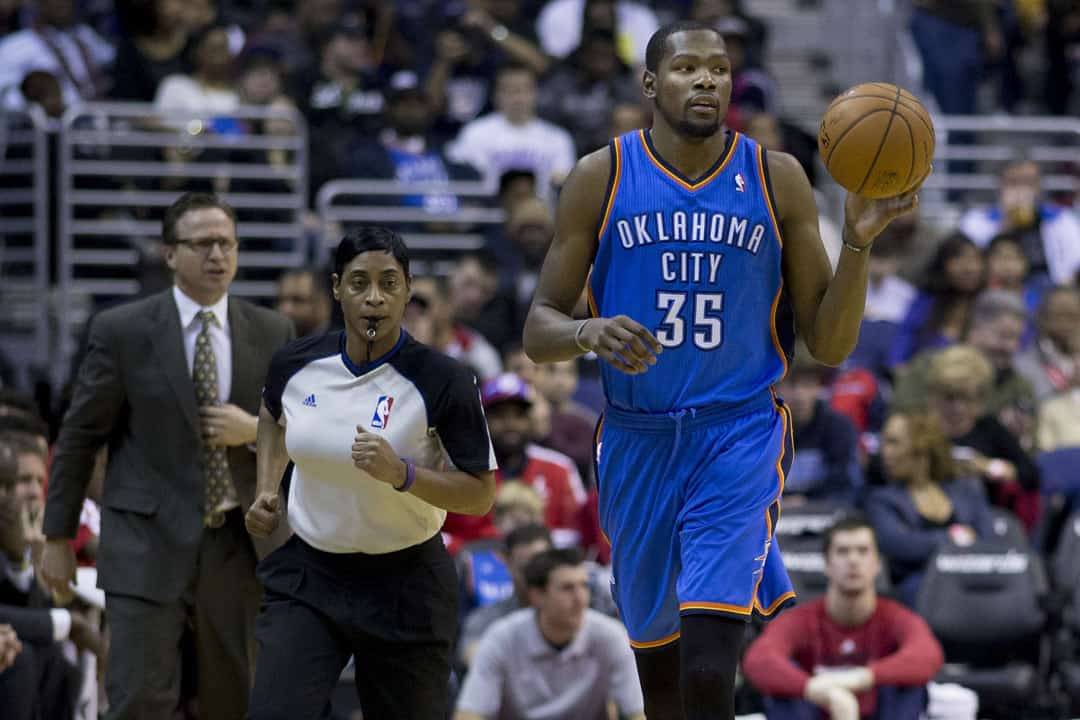In July 2016, NBA superstar Kevin Durant became an unrestricted free agent. After eight seasons with Oklahoma City Thunder without winning a title, Durant wanted to play elsewhere.
In the history of the NBA, it’s rare for a player of Durant’s calibre to become an unrestricted free agent in the middle of his prime.
The entire free agency process — from his four-hour meeting with the Boston Celtics to a two-hour meeting with almost the entire Golden State Warriors team, and so on — was covered minute-by-minute by the media.
With Durant’s ultimate decision and without games on the horizon, his free agency gave fans something to talk about.
Durant joined the Warriors on July 4, 2016, and we all know how that went: the team won two straight NBA championships. So, how did this whole ‘free agency’ fiasco even start? And how has player mobility empowered stars like Durant?
Free agency, along with the NBA’s salary cap increase from $70 million to $94 million in 2016, has allowed stronger NBA franchises to pay multiple superstars at one time, creating a top-heavy league. As an additional caveat, many superstars like Durant have signed on below market value to increase their mobility and play where they want.
For example, DeMarcus Cousins signed a relatively cheap short-term deal with the Warriors in July after an Achilles injury. ‘Cheap’ is the operative word, as he will make only $5.3 million this season, a substantial decrease from $18.1 million in 2017–2018.
While four all-stars playing on one team is infuriating for fans outside of Oakland, maintaining player rights and freedoms is more important than allowing teams to own players.
Sports leagues have not always allowed players to become free agents.
In 1975, pitchers Dave McNally and Andy Messersmith refused to sign their contract with the MLB’s Oakland Athletics and demanded freedom in the open market. Baseball contracts used to include a reserve clause, which meant that players were bound to their team in perpetuity and the team had the right to extend a contract without a word from the player.
The arbitrator’s decision that November ruled in favour of free agency, allowing players to sign on the open market once a contract expires.
Up until 1988, NBA players could only be drafted or traded as their teams essentially owned them.
In 1987, the Seattle SuperSonics drafted two frontcourt rookies, making six-foot-ten forward Tom Chambers a hindrance to their lineup. Chambers, a proven NBA star, needed a franchise that would make the most out of his talent. Head of the NBA player’s union Larry Fleisher told Chambers that he may be able to “get this unrestricted free agency thing done.”
A few days later, it was official. Players whose contracts had ended could freely join any team as long as they had been in the league for over seven years and had finished two contracts. Chambers immediately joined the Phoenix Suns and led them to the Western Conference Finals in consecutive seasons.
Durant’s move to the Warriors wouldn’t have been possible without Chambers and Fleisher.
Free agency has allowed players to choose where they want to work, a freedom that all citizens are rightfully allowed.
Players are no longer treated as a small piece of a larger business. Their talent, coupled with the freedom of free agency, allows them to make the demands necessary to nearly run an organization. After all, shouldn’t those who produce the entertainment reap the most benefits from their skill?


